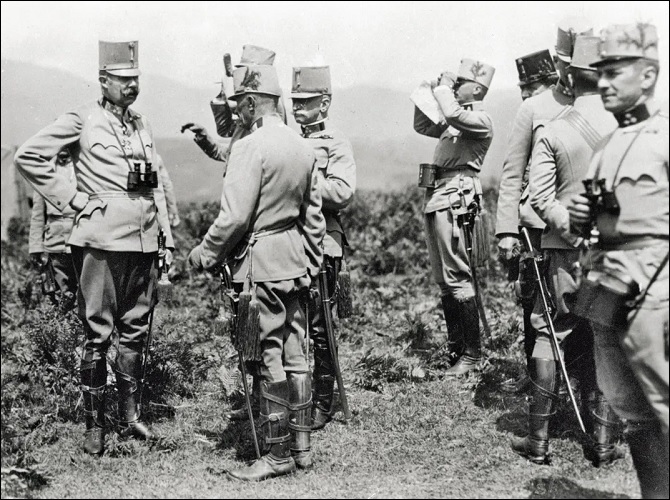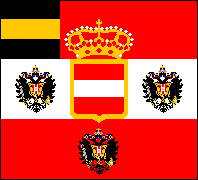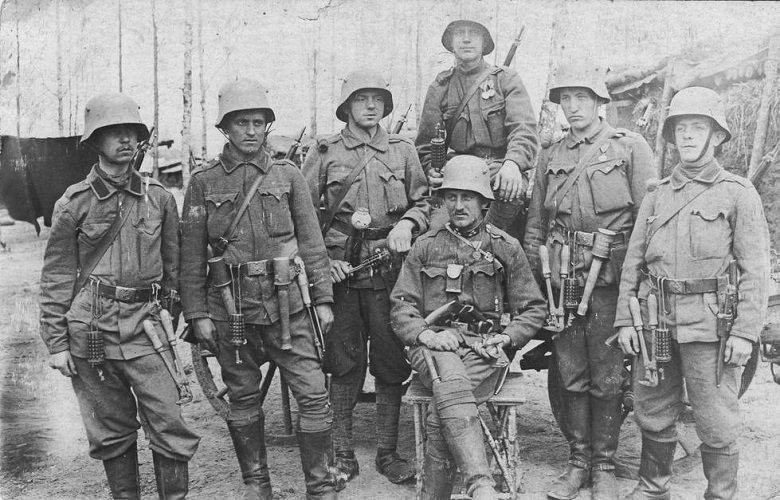Of the major belligerents in 1914, the Habsburg Monarchy
(Austria-Hungary) was the militarily the weakest, and its
army's performance in World War I was decidedly
mediocre—though not quite so bad as is often alleged. Most
of the Austro-Hungarian Army's problems were derivative of
the polity it served, though it must also be noted that the
Army’s senior commanders were, with the occasional
exception, none too competent. The troops themselves were
capable of fighting well if properly armed and competently
led—which all too often they were not.
The Army, like the Habsburg Monarchy itself, was a salad
bowl of nationalities and this presented serious problems, particularly
in the area of language. Since regiments were organized
along “national” lines, career Army officers had often found
it necessary to learn three, four or even six languages in
addition to their native tongue. Conrad von Hötzendorf, the
Chief of Staff in 1914, spoke seven languages. But
by the early twentieth century this traditional professional
standard had been abandoned in practice if not in principle.
The majority of officers were German Austrians and most of
the rest were Hungarians. These men resented having to
learn the languages of the troops they commanded—Croats,
Czechs, Bosnian Muslims, Poles, Slovaks, etc.—and did their
best to evade the requirement. Instead they relied on the “language
of service”: the few hundred German words that the troops
were made to learn so that they’d understand when their
officers spoke of rifles, sabers, cannons, etc. It was a
situation unlikely to foster organizational cohesion, nor
did it.

A general of the
Austro-Hungarian Army (left) and his staff
(Heeresgeschichtliches Museum)
This fundamental problem of ethnicity was compounded by
the Austro-Hungarian Army’s administrative and
organizational deficiencies. The Army was small (48 infantry
divisions, 8 cavalry divisions) and poorly equipped—this despite the fact that
the empire had a population of 50 million and a reasonably
well-developed industrial base. But the politics of
"dualism"—the unstable, uneasy relationship between Vienna
and Budapest—tended to stifle military reform projects. Army
reform was proposed from time to time but the Hungarians,
determined to maximize their autonomy, consistently refused
to give the necessary money. Nor was conscription,
supposedly based on a universal liability for service, very
strictly enforced. Finally, both the administrative machinery
of the Army and its high command were notoriously inefficient.
Thanks to dualism the Habsburg Monarchy had not one army but
three: the Imperial and Royal Army (kaiserlich und
königliche or k.u.k Armee) informally called the
Common Army, maintained jointly
by Austria and Hungary, the Austrian Landwehr, and the
Hungarian Honvéd. The Hungarians, jealous of their
autonomy, persistently opposed increased funding for the
k.u.k Armee, preferring to spend money on the Honvéd
instead. Nor did the Army possess any real reserve
divisions, conscription having been applied with
insufficient rigor to build up the necessary trained
manpower. Adolf Hitler was one of many Austrian subjects who
found it easy to dodge the draft. So in 1914 the pool of reservists was only
sufficient to bring the existing divisions up to war
strength and to replace initial losses.

Command flag of a field
marshal of the Austro-Hungarian Army
The tripartite nature of the Army also had the
unfortunate effect of complicating the structure of the
infantry division. Infantry regiments of the k.u.k Armee
had four battalions, whereas those of the Landwehr
and Honvéd had only three. Thus a division could have
as few as twelve or as many as sixteen battalions, depending
on the identity of its four regiments; the average strength
was fourteen battalions. The division's artillery brigade
was also variable in size and quality. Usually there were
two regiments: one with field guns and one with field
howitzers. The former usually had four batteries, each with
six guns; the latter usually two batteries, each with six
howitzers. But the number of batteries varied and some divisions had no howitzer regiment
at all. Moreover, Austrian guns and howitzers were mostly
outmoded, made of heavy bronze/steel alloy, with primitive
recoil systems and roughly half the range and rate of fire
of comparable German and Russian artillery.
In 1914, therefore, the Army as a whole was ill prepared
for war. Infantry training was primitive and the artillery
was armed for the most part with a miscellany of obsolete
weapons. Tactically, far too much faith was placed in
cavalry, which was in any case poorly trained for
reconnaissance, the only useful role it still had on the
modern battlefield. The result was a string of costly and
humiliating defeats in the first year of the war. German
assistance staved off a complete collapse but the Army’s
battle capacity had been gravely undermined and it never
fully recovered. By 1917 it was operating on the Eastern
Front as a mere auxiliary of the German Army, often under
direct German command.

Stoßtruppen
(assault troops) of the Austro-Hungarian Army in 1917
(Imperial War Museum)
Though tales of mass surrender and desertion were
exaggerated, the Army’s Slav troops grew increasingly
unreliable as the war wore on. Czech soldiers in particular
were bitterly resentful of the disdain with which their
mostly German Austrian officers treated them. Often the
reliability of a given unit depended on which enemy it was
fighting. Croat troops, for instance, generally fought
harder against Italy, the hated “hereditary enemy,” than
they did against the Russians.
Still, the Austro-Hungarian Army gave a better account of
itself than might have been expected. Italy entered the war
in 1915 at a moment when the Habsburg Monarchy’s military fortunes
were at their nadir. Coveting Austrian Trentino, the city
of Trieste and the eastern Adriatic litterol, the Italians anticipated a quick victory. But
the Austro-Hungarian Army fended off no fewer than eleven
Italian offensives between 1915 and 1917—this despite the
fact that it was always outnumbered. In 1917, with a
reinforcement of German divisions, the Austrians launched a
counteroffensive that demolished the Italian Army and very
nearly knocked Italy out of the war.
But this last victory came to nothing. The process of
disintegration set in motion by the stress and strain of war
had so far advanced by 1917 that nothing could save the
Habsburg Monarchy and its Army. The former’s collapse in
October 1918 was swiftly followed by the latter’s
dissolution.